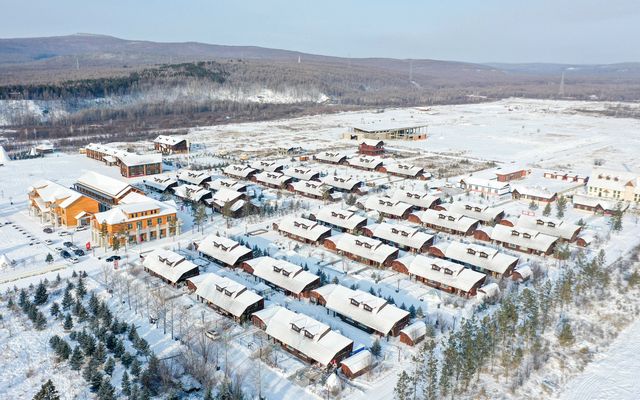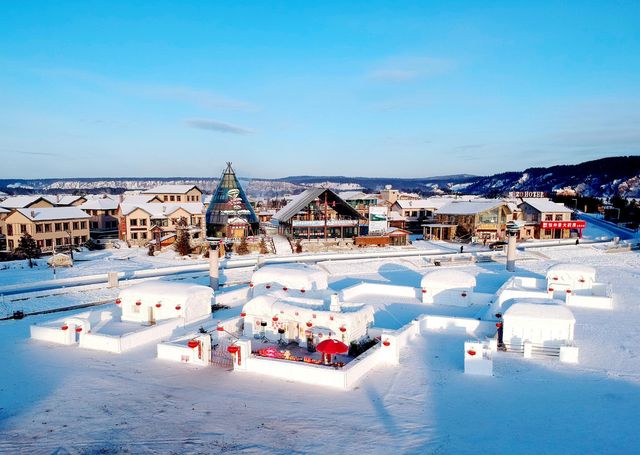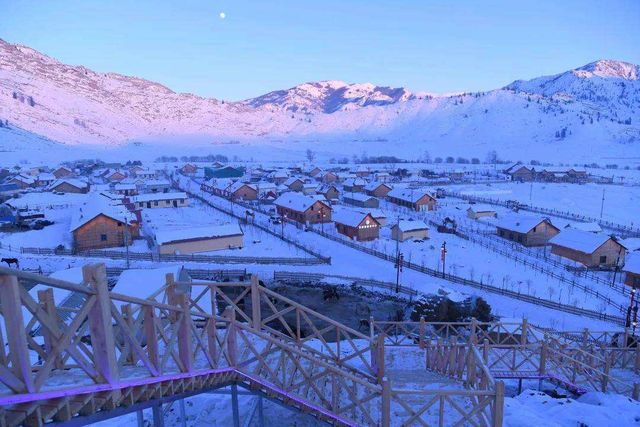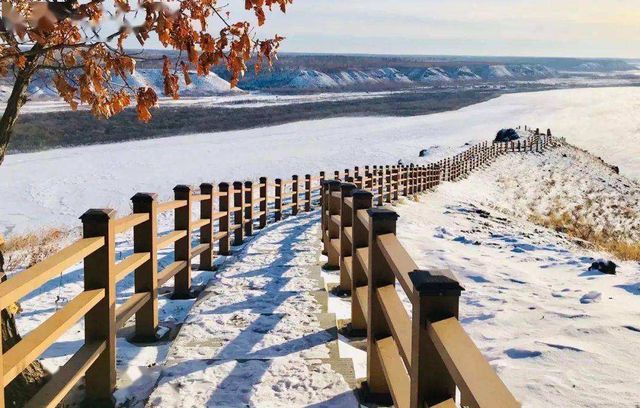Where is the coldest place in China? China, a country with vast land and abundant resources, has great differences in climate. From the sub-zero weather in the north to the year-round subtropical weather in the south, you can feel the different flavors of this country. This post will introduce you to the 10 coldest cities in China.
1. Genhe 根河 (-58℃)

2. Mohe 漠河 (-52.3℃)

3. Fuyun County 富蕴县 (-51.5℃)

4. Huma 呼玛 (-50.2℃)

5. Yili 伊犁 (-51℃)
The extreme maximum temperature in Yili Prefecture is 42.8°C and the extreme minimum temperature is -51.0°C. The annual average temperature in the Ili River Valley is 10.4°C, the annual average temperature in the Tacheng area is 8.7°C, and the annual average temperature in the Altay area is 5.8°C. The average annual precipitation: 417.6 mm in Ili Valley, about 600 mm in mountainous areas; 342.7 mm in Tacheng Basin, about 400 mm in mountainous areas; 202.6 mm in Altay Mountains; 100-200 mm in other areas.
6. Yakeshi 牙克石(-50℃)
Yakeshi City is a county-level city under the jurisdiction of Hulun Buir, located in the middle of Hulun Buir City and the west slope of the middle section of the middle ridge of the Greater Khingan Mountains. The average temperature in Yakeshi City is -4.4℃-0.4℃, the temperature difference between day and night is large, and the annual average sunshine hours are 2378-2720 hours. In Yakeshi, the temperature rises rapidly in spring, which is dry and windy, and the temperature difference between day and night is large; summer is short and cool, and precipitation is concentrated; autumn cools sharply, and frosts are early; winter is long and cold, and the extreme bottom temperature in the north is -46.5 ℃. Among them, the lowest temperature in Iturihe Town, Yakeshi City, can reach -50℃ in winter.
7. Baishan 白山 (-42.2℃)
Baishan City has a north temperate continental monsoon climate and is the coldest area in Jilin Province. Spring has a large temperature difference between day and night; summer is short, warm and rainy; autumn is cool and bright; winter is long, dry and cold. The annual average temperature in the urban area is 4.6 °C, the historical maximum temperature in summer is 36.5 °C, the historical minimum temperature in winter is -42.2 °C, the annual average precipitation is 883.4 mm, the sunshine hours are 2259 hours, and the frost-free period is 140 days.
8. Karamay 克拉玛依 (-40.5℃)
Karamay City is located in the mid-latitude inland area and has a typical temperate continental climate. Its characteristics are: the disparity between cold and summer, dryness and little rain, more wind in spring and autumn, and large temperature difference between winter and summer. The snow is thin, the evaporation is fast, and the permafrost is deep. Disasters such as strong winds, cold waves, hail, and flash floods occur frequently. Among the four seasons, winter and summer are long and the temperature difference is large. Spring and autumn are transition periods, and the seasons change is not obvious. The annual average temperature is 8.6 ℃. January is the coldest month, with an average monthly temperature of -15.4°C and an extreme minimum temperature of -40.5°C in the Xiaoguai area on December 23, 1984.
9. Heihe 黑河 (-40℃)
Heihe City has a cold temperate continental monsoon climate, spanning three, four, five and six accumulated temperate zones. Spring is hot and windy, summer is rainy and hot in the same period, autumn is abruptly cooled, winter is cold and dry, winter is long and summer is short, and the four seasons are distinct. The city’s annual average precipitation is 500-550 mm, the effective accumulated temperature is 1950-2300 °C, the sunshine hours are 2560-2700 hours, the frost-free period is 90-120 days, the annual average temperature is -1.3-0.4 °C, the daily maximum temperature is 38.2 °C, and the minimum temperature – 40℃, the annual average wind speed is 2.0-3.5 m/s.
10. Tacheng area 塔城地区 (-40℃)
The Tacheng area belongs to the mid-temperate arid and semi-arid climate zone, with rapid warming in spring and large fluctuations in temperature and temperature. The average monthly temperature in summer is above 20 ℃, the hot period is up to 90 days, and the hot period is up to 29 days. In autumn, the temperature drops rapidly, and in more than a month, the temperature can drop by 20 ℃. Winter is cold and long, nearly half a year. The annual extreme maximum temperature is 40℃, and the extreme minimum temperature is minus 40℃.
[…] Chongqing City, referred to as “Chongqing”, also known as Mountain City, is located in the southwestern part of China’s inland and the upper reaches of the Yangtze River. , the economic center of the upper reaches of the Yangtze River. Chongqing is a unique “mountain city and river city”. The landforms are dominated by hills and mountains, of which 76% are mountains. The Yangtze River runs through the whole territory, with a flow of 691 kilometers, and it intersects with rivers such as Jialing River and Wujiang River. It is rich in tourism resources, with magnificent landscapes such as the Three Gorges of the Yangtze River, Dazu Rock Carvings, a world cultural heritage, Wulong Karst, a world natural heritage, and Jinfo Mountain in Nanchuan. Chongqing has jurisdiction over 38 districts and counties (26 districts, 8 counties, 4 autonomous counties) with an area of 82,400 square kilometers, ranking 26th in the country and one of the ten largest cities in China. See Also: 10 Coldest Cities In China […]